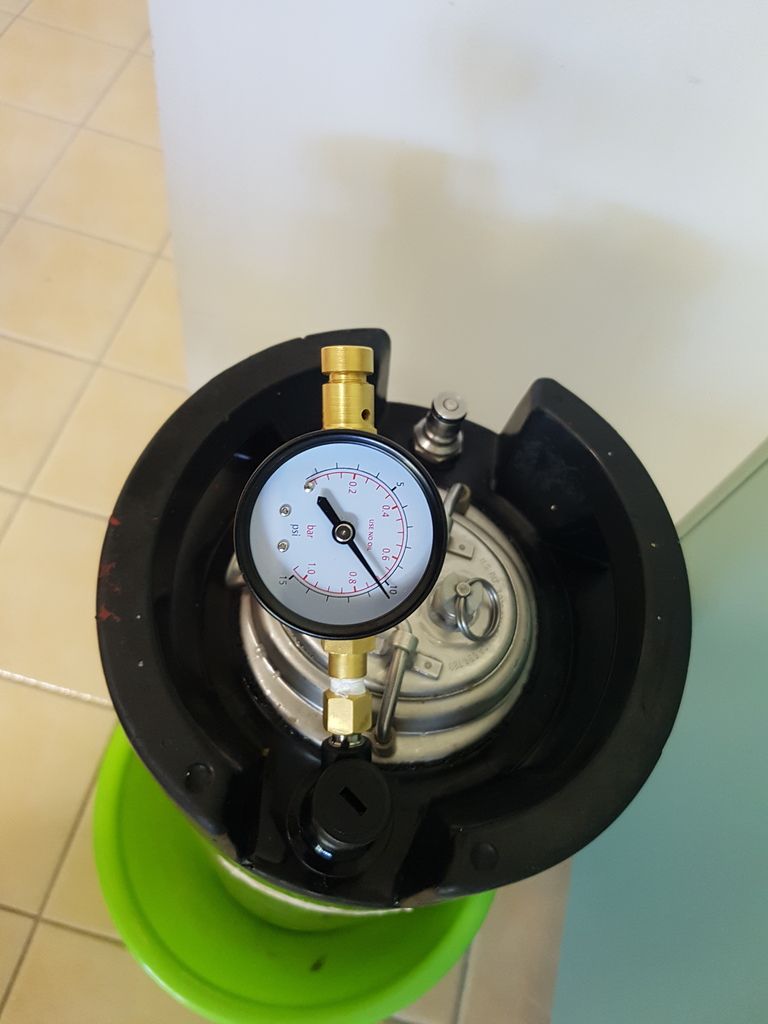B
bradsbrew
Guest
I wouldn't trust those taps. Did you try the 30 psi with liquid or just air. I would assume 20L(weight) of carbing beer and 26 psi of pressure would be different to just air pressure?


I wouldn't trust those taps. Did you try the 30 psi with liquid or just air. I would assume 20L(weight) of carbing beer and 26 psi of pressure would be different to just air pressure?
A lot of information on Wiley online library (brewing institute) Pressure Fermenting, discussing lager fermentation, I am happy with what I have read on this thread and excited to give my ghetto low pressure fermentation a go first, applies only to ale yeasts. This method can save me money, I always go for secondary ferment and transferring the beer to secondary I blanket the beer being transferred, with this method I can capture the co2 and transfer without using my gas bottle, anything left over I can capture in a camping deflatable water container and use with my hand pump. The lagers, according to info gleaned from above link 26 psi pressure for lagers at around 16 degrees C for finishing quicker, ale yeast doesn't like the pressure.
I tested a cube today on my compressor took it up to 30 psi so a cube is alright for the pressure range, it was a heavy duty dangerous goods cube, $9.00 for a 25 litre so reasonable saving there.
This is how I have set mine up for the ales, on hindsight I will add another JG tap and JG non return that way if needed when transferring beer using the 2 bottom taps I can bring the co2 back into the original fermentation vessel.
View attachment 110264
That's some top quality science right there.
I've been wondering when someone will start selling plastic corny's, this might be the start of some ghetto versions.
I spend a lot of time on Alibaba these caught my attention, this price and image is not the manufacturer, so pricey compared to the manufacturers price but the manufacturer has a couple of thousand minimum order.
https://www.alibaba.com/product-det...ml?spm=a2700.7724838.2017115.8.718a1ce9gvLo1d
I wouldn't trust those taps. Did you try the 30 psi with liquid or just air. I would assume 20L(weight) of carbing beer and 26 psi of pressure would be different to just air pressure?
yep been done before with that set up.Could something like this be used as a PRV?
https://www.banggood.com/AR2000-Air...mmds=detail-left-hotproducts&cur_warehouse=CN
The one he has linked is the AR2000 which is a pressure relief valve. One of the guy in the original pressure fermenting thread was using exactl;y this unit.I don't see how. It's just a regulator. The high pressure side is unregulated, the low pressure side sits at the desired pressure. Could be used as a secondary regulator if you want to run CO2 into kegs at different pressures.
Hey guys, I'm about to ferment a weizen with Wlp351. Has anyone used this yeast under pressure? Or should I swap the spunding valve for a blow off? I like a nice estery weizen...

Enter your email address to join: